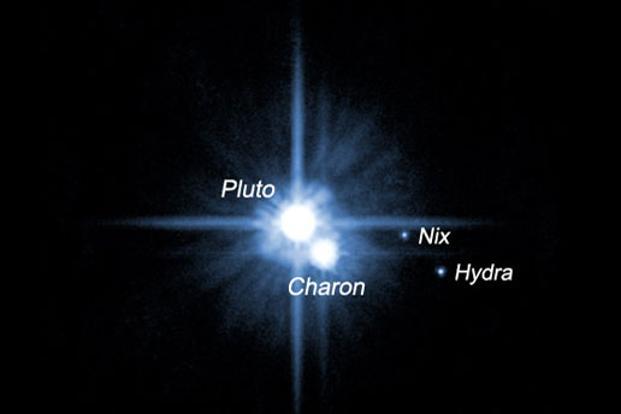
Assembled into a seven-frame movie, the new images provide the spacecraft's first extended look at Hydra and its first-ever view of Nix. Photo: NASA
WASHINGTON (PTI): A NASA spacecraft set to encounter Pluto this summer has spotted two small moons orbiting the icy dwarf planet.
The moons Nix and Hydra are visible in a series of images taken by the New Horizons spacecraft from January 27 to February 8, at distances ranging from about 201 million to 186 million kilometres.
The long-exposure images offer New Horizons' best view yet of these two small moons circling Pluto which Clyde Tombaugh discovered at Lowell Observatory in Flagstaff, Arizona, on February 18, 1930.
Assembled into a seven-frame movie, the new images provide the spacecraft's first extended look at Hydra and its first-ever view of Nix.
"It's thrilling to watch the details of the Pluto system emerge as we close the distance to the spacecraft's July 14 encounter," said New Horizons science team member John Spencer, also from Southwest Research Institute, Boulder, Colorado.
"This first good view of Nix and Hydra marks another major milestone, and a perfect way to celebrate the anniversary of Pluto's discovery," said Spencer.
These are the first of a series of long-exposure images that will continue through early March, with the purpose of refining the team's knowledge of the moons' orbits.
Each frame is a combination of five 10-second images, taken with New Horizons' Long-Range Reconnaissance Imager (LORRI) using a special mode that combines pixels to increase sensitivity at the expense of resolution.
In the images, Nix and Hydra are just visible against the glare of Pluto and its large moon Charon, and the dense field of background stars.
Nix and Hydra were discovered by New Horizons team members in Hubble Space Telescope images taken in 2005.
Hydra, Pluto's outermost known moon, orbits Pluto every 38 days at a distance of approximately 64,700 km, while Nix orbits every 25 days at a distance of 48,700 km.
Each moon is probably between 40-150 kilometres in diameter, but scientists won't know their sizes more precisely until New Horizons obtains close-up pictures of both of them in July.
 Previous Article
Previous Article Next Article
Next Article













The Indian Air Force, in its flight trials evaluation report submitted before the Defence Ministry l..
view articleAn insight into the Medium Multi-Role Combat Aircraft competition...
view articleSky enthusiasts can now spot the International Space Station (ISS) commanded by Indian-American astr..
view article